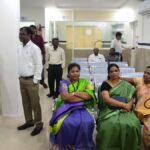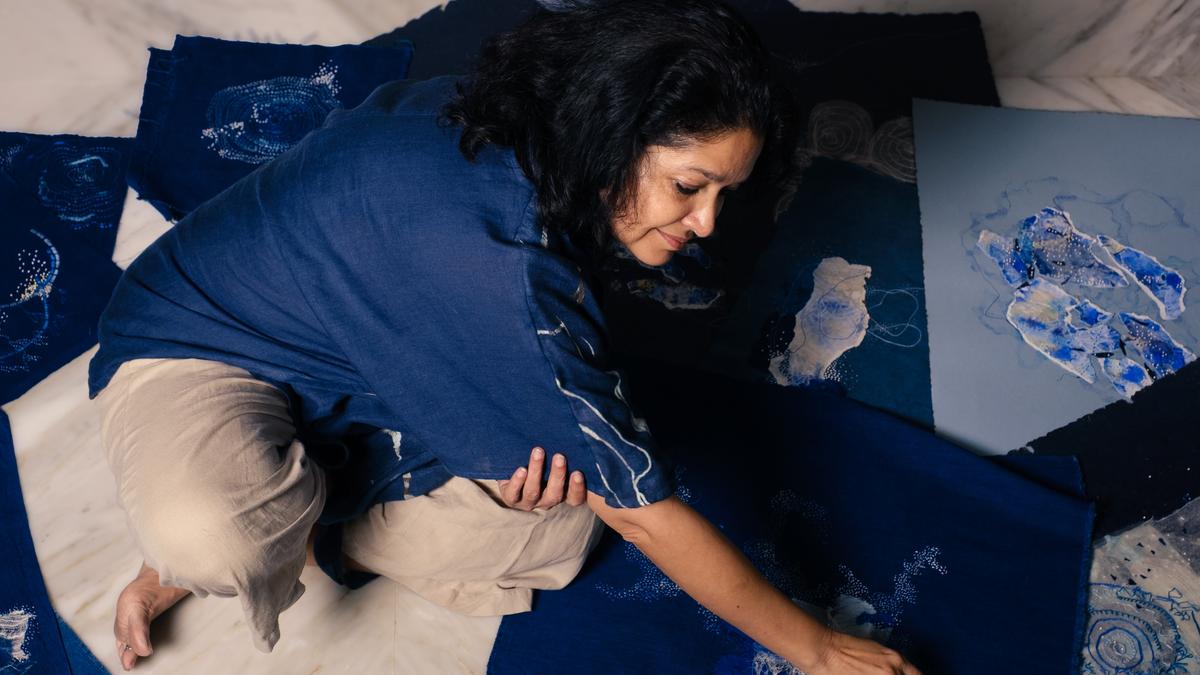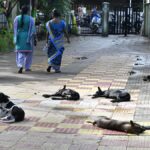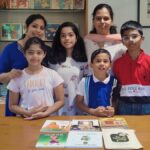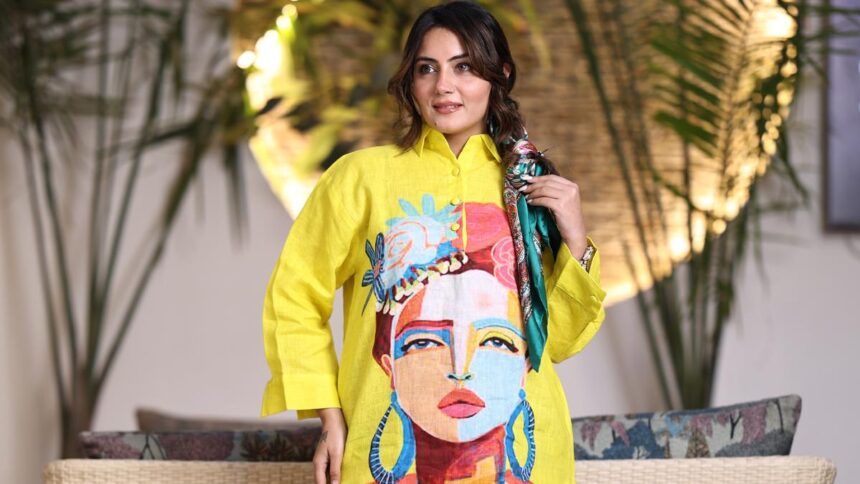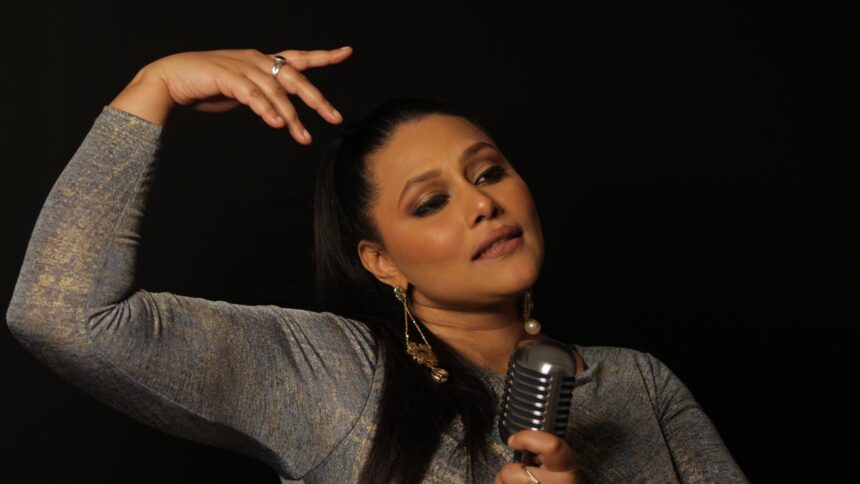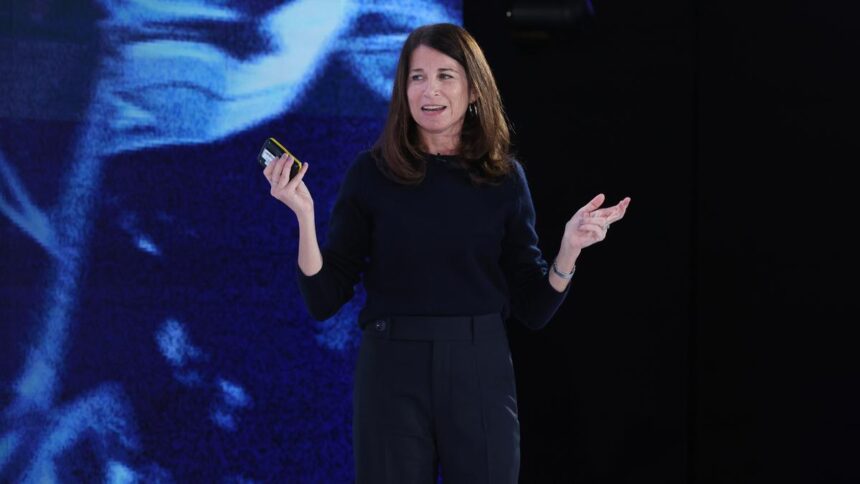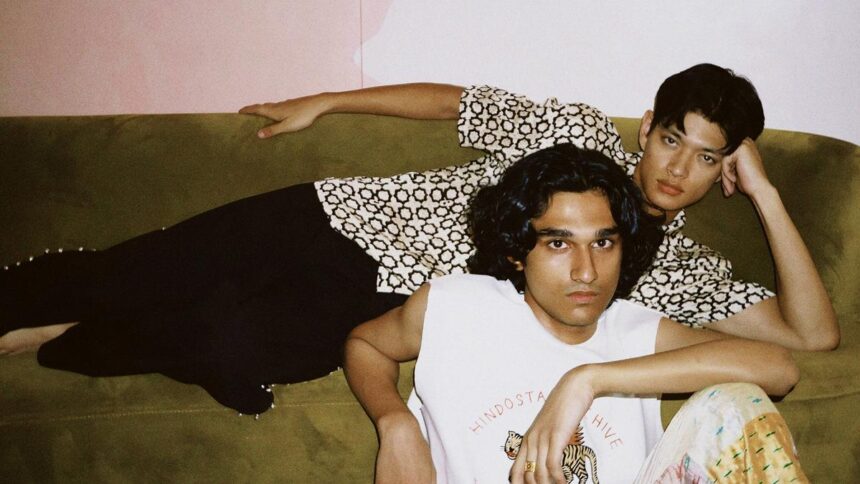Growing up in Jaipur, surrounded by the slow rhythms of a culturally rich city, artist Radhika Surana did not realise how deeply its textures and traditions were imprinting themselves on her. “The indigo blue which was all over the city, the culture of embroidery which I had at home, the relaxed slow life of a small city; this background shaped my technical vocabulary,” she says.
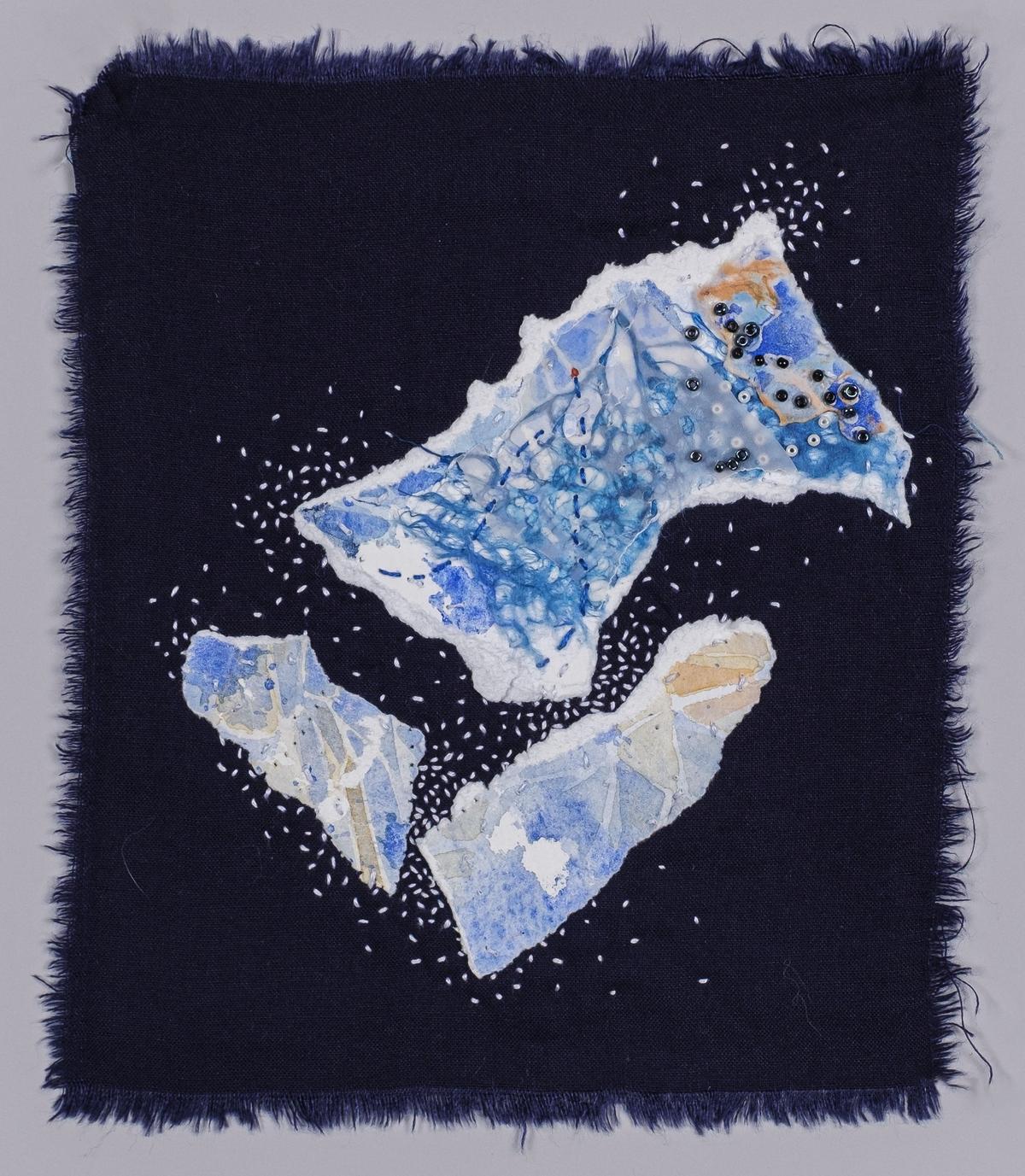
Transformations VII: Watercolour on 300 GSM paper and hand embroidery on cloth
| Photo Credit:
Special Arrangement
Over time, Radhika understood that this influence was not just about skills or motifs, but about seeing making as “an act of devotion; repetition not as monotony but as a meditative rhythm.” This philosophy has carried through a creative path that has been wide-ranging. A graduate in fine arts from Rajasthan University, Radhika trained under eminent artist Dwarka Prasad Sharma, studied watercolour and portraiture at Canadore College, Ontario, and apprenticed with Canadian artist Charlie Rapsky.
It was only when she began working with textiles that something in her settled. “Embroidery felt like mending, like returning to the first language… the act of holding the fabric close to oneself led me to a feeling of belonging, care, and continuity,” she says. This deep relationship with fabric and time now anchors her latest solo exhibition, Somewhere I Have Never Travelled, on view at New Delhi’s Art Alive until August 20, 2025.
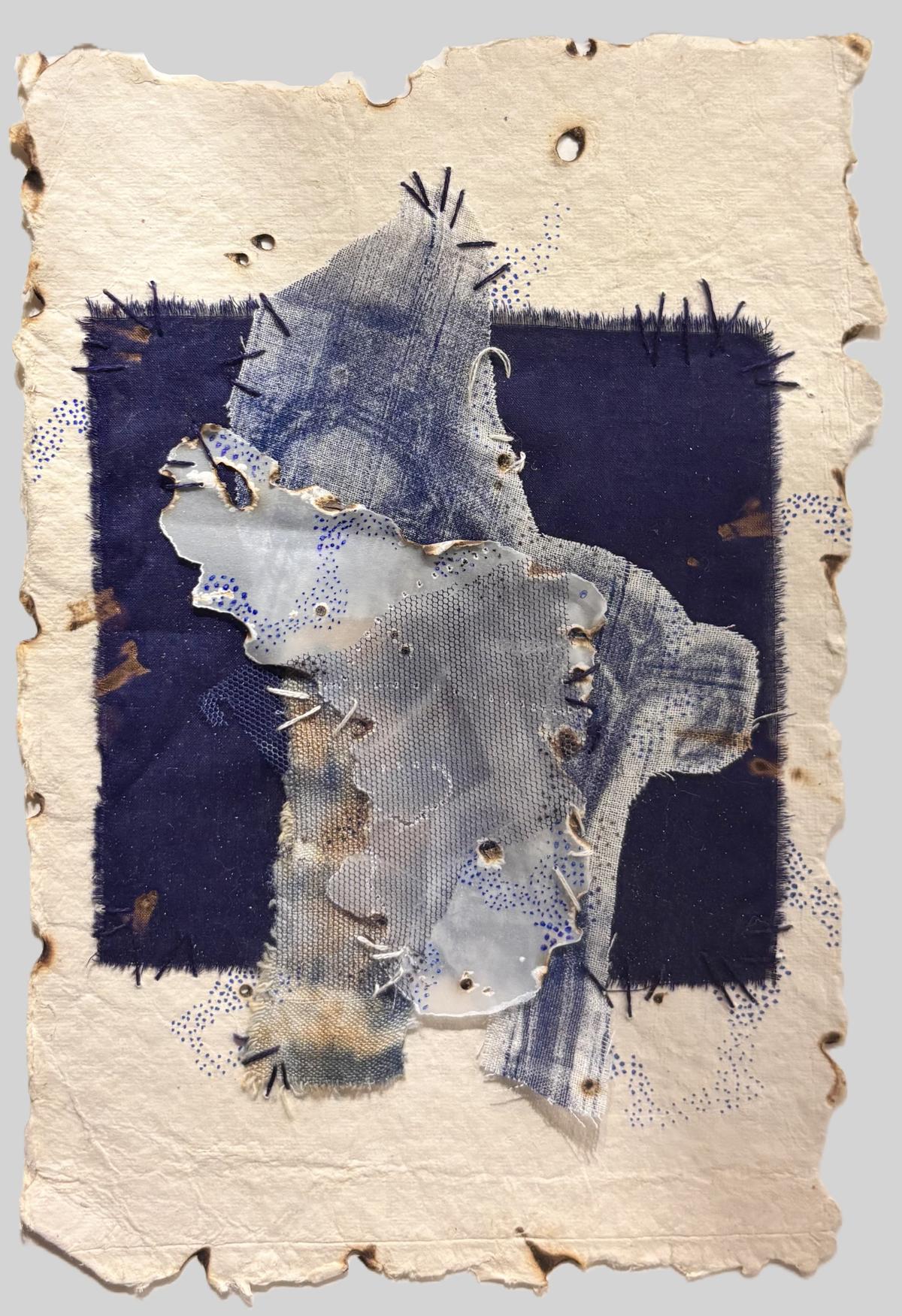
An artwork featuring hand embroidery, pen marks
| Photo Credit:
Special Arrangement
The weight of Indigo
Borrowing its title from an E.E. Cummings’ poem, Somewhere I Have Never Travelled draws on Radhika’s instinctive embroidery practice to explore human connection and emotional landscapes. Dyed in deep vats of indigo, her works weave personal meditations with India’s textile heritage and its fraught colonial history.
“Indigo has always carried a double weight for me,” she says. “It’s personal and historical. I can’t ignore indigo’s global past: it fuelled trade routes, wealth, and, tragically, systems of enslavement and colonial extraction.” Working with the pigment pushes her in two directions at once: as a means of self-expression and a conversation with heritage.
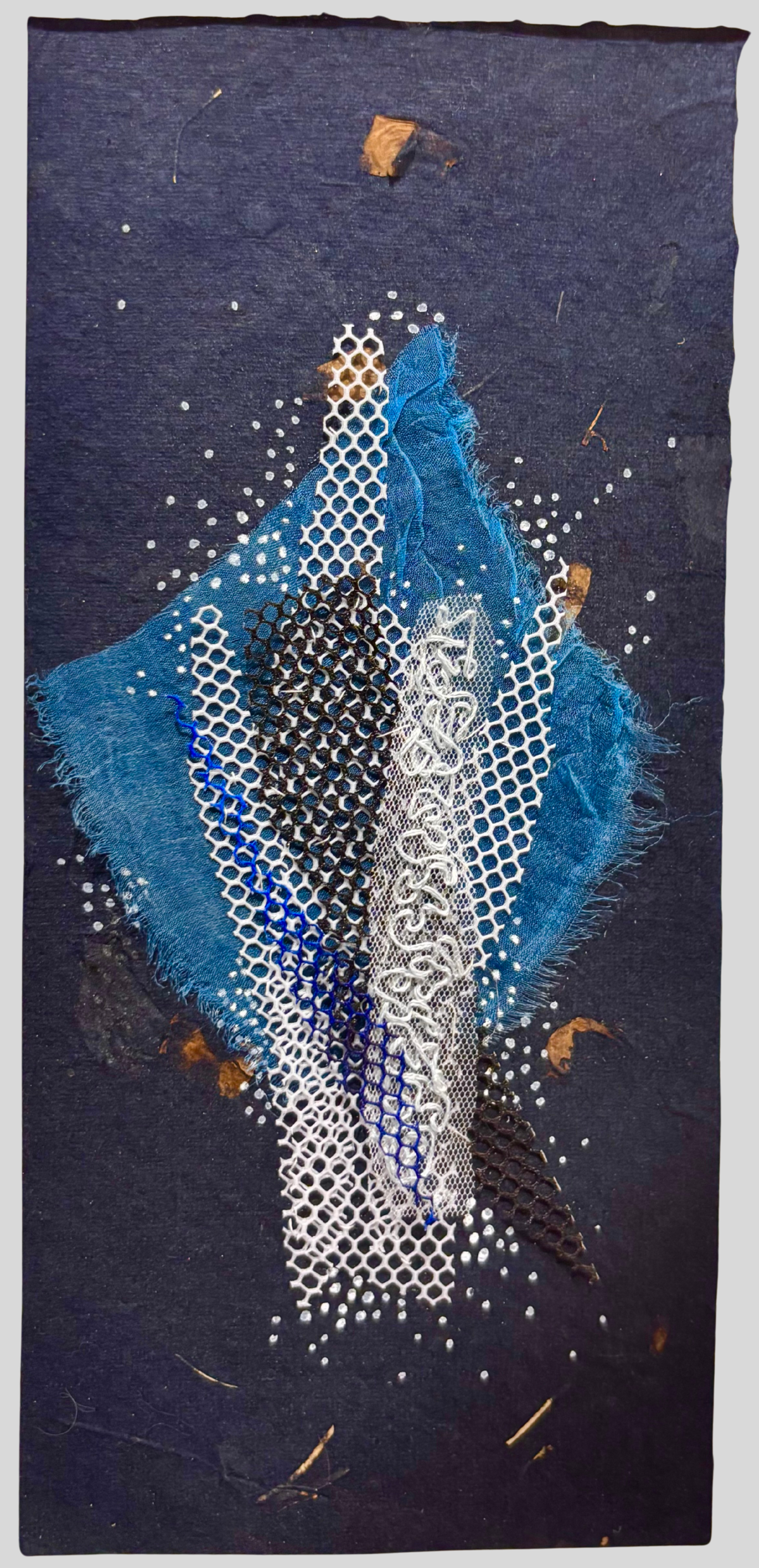
An artwork featuring embroidery on net, hand made paper
| Photo Credit:
Special Arrangement
The exhibition features 63 works shaped by accident, chance, and the tactility of materials. In one, gauze hand-stitched over a cyanotype-printed cloth forms subtle waves and tonal shifts, punctuated with minimal French knots. Another begins with deep dark splashes, later softened with Japanese paper layering technique. There is another piece that treats fabric like watercolour, using scraps to build tonal values with cyanotype prints of plants. In a work inspired by lichens on tree bark, brown contrasts with crème beads to create simple but intense imagery.
A private language in thread
For Radhika, the vocabulary of materials evolved instinctively. She speaks of fabrics as collaborators, revealing their nature once in her hands. “Over time, these gestures began to act like words in a private language,” she says.
Knots mapped intimacy; charred or cut lines signalled rupture; restitched seams embodied repair. “The fabric became a site where emotional states could live side by side. Beauty intertwined with fracture; care layered over damage — just as in any relationship between two humans.”
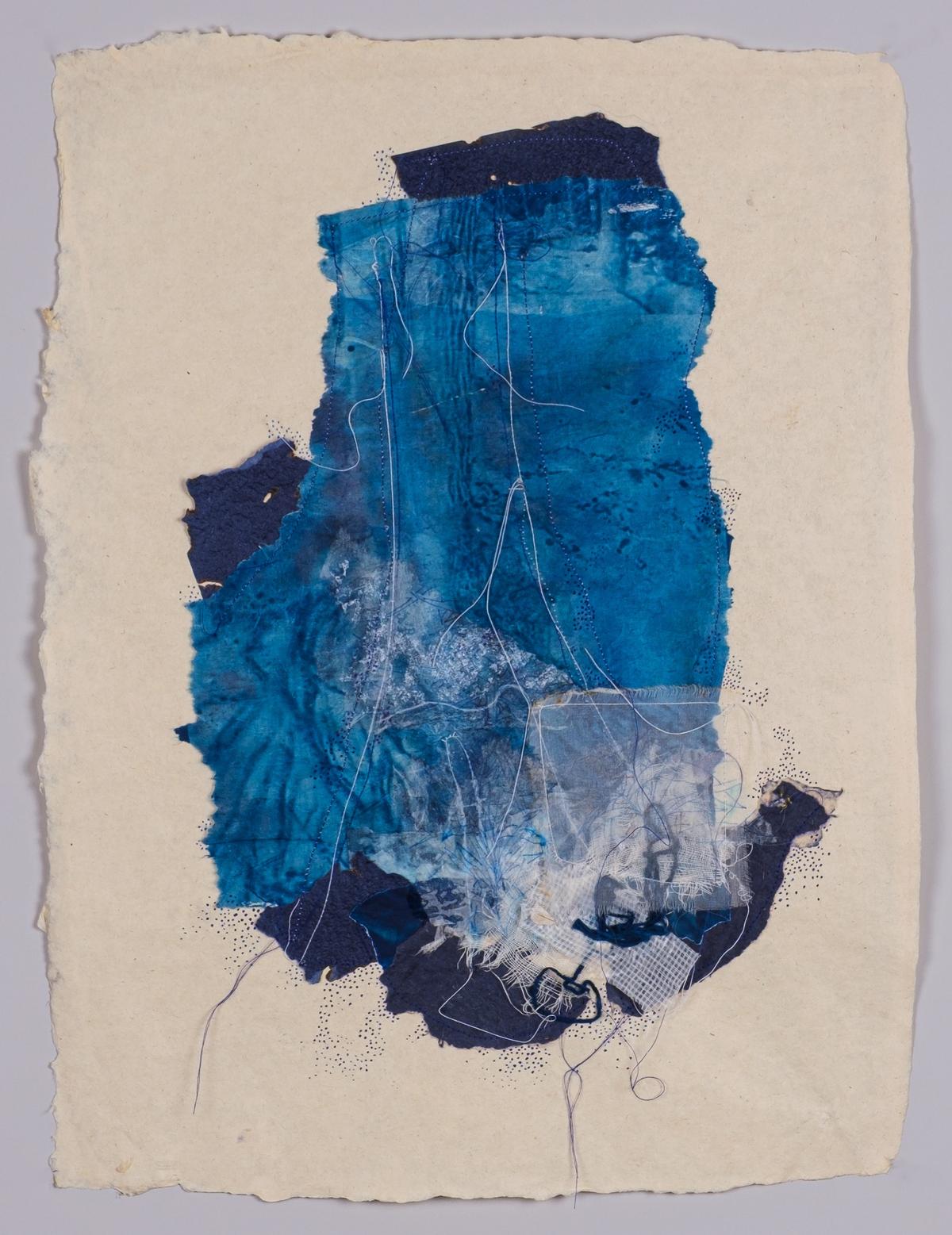
Roots of the Relationship featuring wasli paper, cyanotype print and organza cloth
| Photo Credit:
Special Arrangement
That link between lived experience and visual language is deliberate. “It’s only when one feels the emotion that one can authentically express it,” she says. The slashes, burns, and repairs in her works emerge from personal histories of loss and healing, honouring vulnerability as much as resilience.
Instinct as form
This instinctive approach to fabric mirrors the way she reads Cummings’ poem; the affinity is more spiritual than literal. Radhika describes both poem and practice as unfolding “with a kind of quiet inevitability, yet without a rigid structure… loose, organic stitches, an openness to asymmetry, letting the soul and instinct guide.”
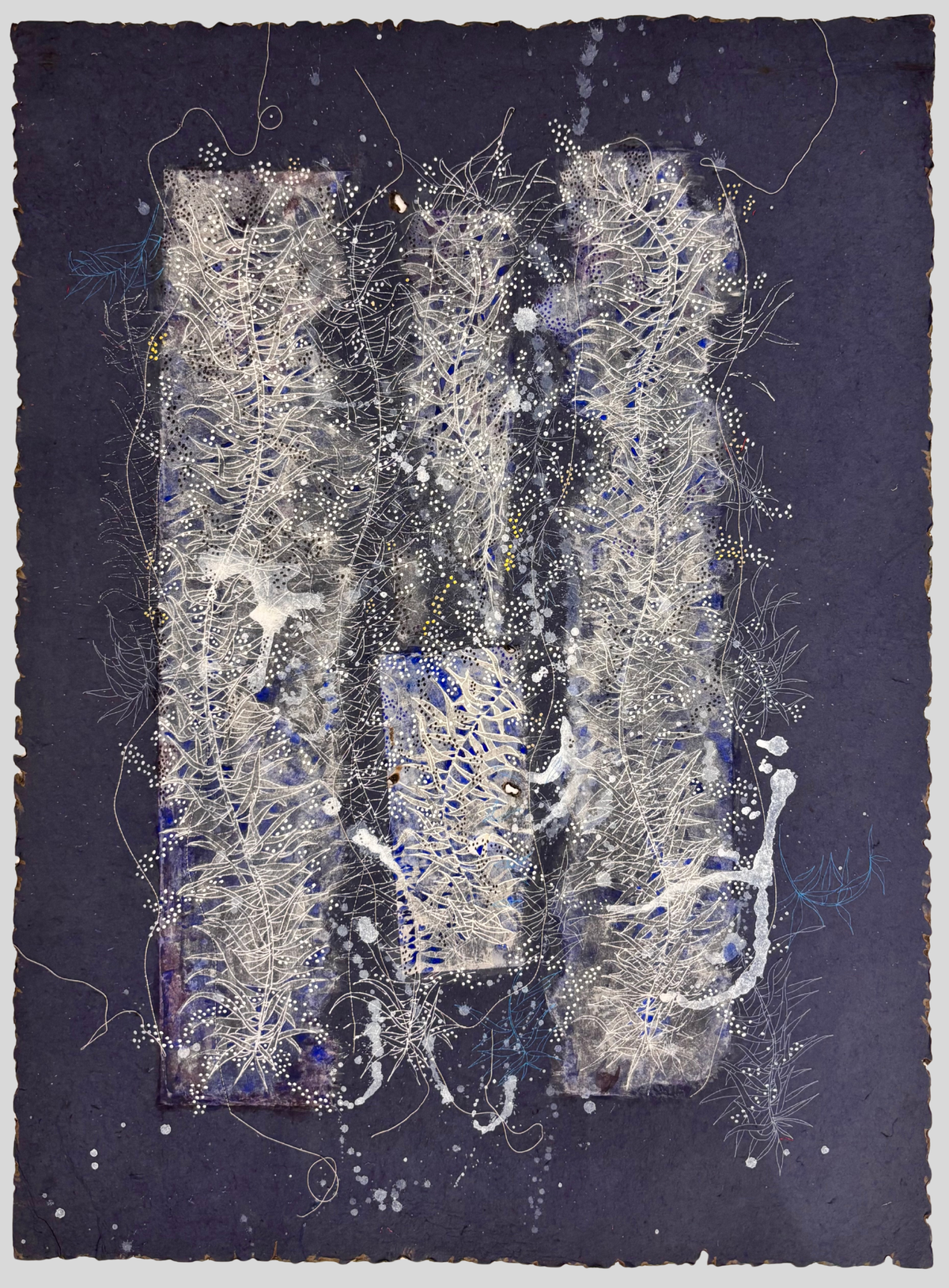
An artwork with Japanese kozo paper, machine embroidery, and acrylic paint
| Photo Credit:
Special Arrangement
Ultimately, she hopes viewers leave with a sense of the layered labour that relationships require. “They are delicate,” she says, “and it is important to understand each layer to help them grow.”
In her hands, indigo and embroidery become vessels for reflection, care, and cultural reclamation — holding past and present in the same thread.
The exhibition is on till August 20, Monday to Saturday, 11am to 7 pm, at Art Alive, Gamal Abdel Nasser Marg, Block S, Panchsheel Park South, New Delhi.
Published – August 14, 2025 11:40 am IST





